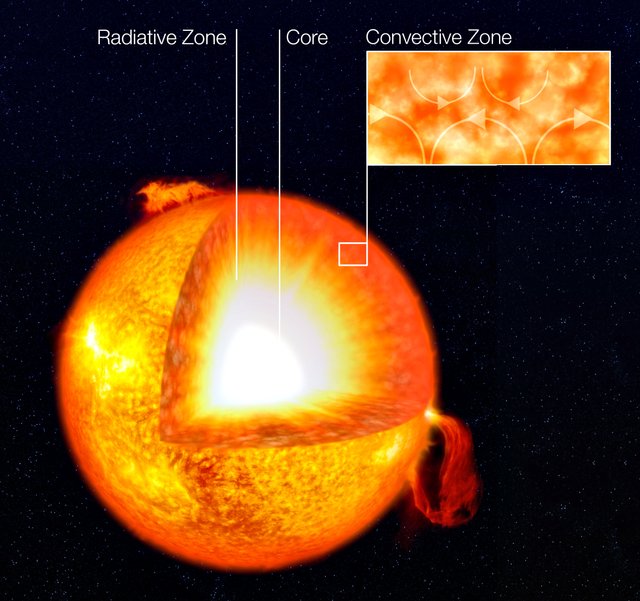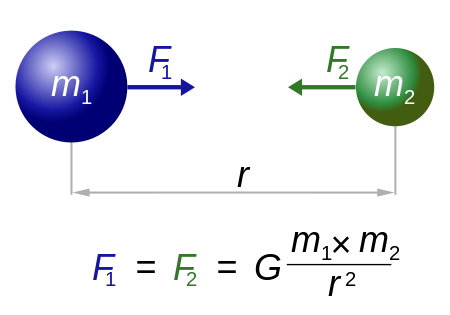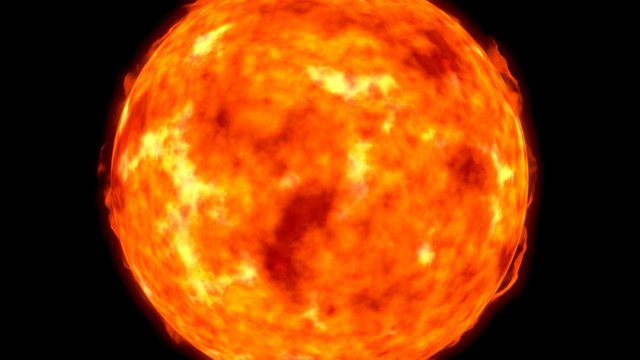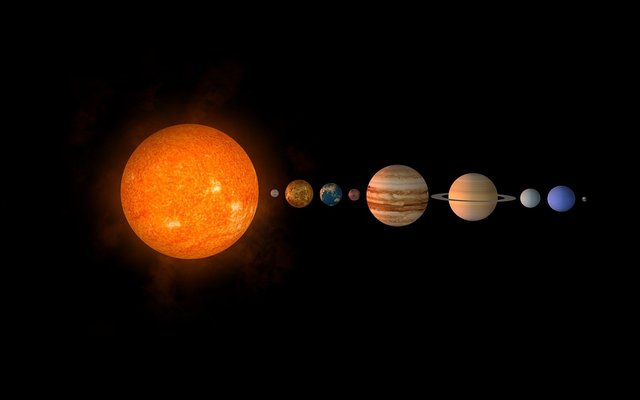So What If The Sun Suddenly Disappears?

Image Source: Pixabay
Well, it all began yesterday when the rain refused to stop on time. It had begun earlier even before the crow could lurch out of its deep sleep. It was light one but one that’d continued until the evening.
I’ve got plans for the day, plans that were dependent upon the emergence of the Sun. I did some laundries so I had some clothes to dry. I washed my shoes yesterday too which I’d hoped to wear to work this morning, and I had a friend to visit as well.
Now, all these were set before me yet the clouds refused to give way to the emergence of the Sun. At exactly noon, I gave up anyway and sort for alternative. “This rain doesn’t seem to be willing to give up anytime soon”, I must have thought. I advanced to spreading them around the living room – on the couch. I utilized some portions of the floor and also advanced to the bedroom for the bed space -all these for my clothes to at least dry to an extent. I further prayed for the Power Holding Company to provide electricity (as there was no power in the community at that time) so I may conclude the drying of the clothes with ironing.
I survived anyway. However, amidst this little drama at my home yesterday, a scenario occurred to me that I was taken aback and could not react to immediately as I had no knowledge whatsoever of the implications of the scenario. It was that ‘What if the Sun never appears again?”. That is, what if the Sun disappeared from our sky, from our solar sy?
That’s a strange question, right?
I did some googling and consultation on this and I have decided to share my findings with you guys.
Yes, What if the Sun never appears again?
Well, before I begin to feed our imaginations with the idea of what would really happen if this occurrence (disappearance of the Sun) befalls the planet, it is quite important that we understand well what the Sun really is and how important it is to us, right?
Thus, it happens that the Sun is just another star in the Solar System, the closest of them (stars) to earth (149.6 million km which is only about 0.00001581 in light years) followed by Proxima Centauri which is about 4.22 light years away from the Earth while the next neighbors are Alpha Centauri A and Alpha Centauri B, which are both 4.3 light years away from the Earth.
Light Year, in a more simplified term, is the equivalent distance covered by the light travelling in a straight line for one year. And since light travels at 300,000 km per second, it conforms with reasoning that it must have covered as much as (300000 x 31540000) in a year since there are 31540000 seconds in a year. Thus, the light is expected to have covered 9.460700000000km in a year. That is about 9.5 trillion kilometers in a year.
WOW!
The Sun is said to be the star that occupies the center of our Solar System, formed about 4.6 billion years ago. The Sun’s diameter and mass are about 1.39 million kilometers and 1,989,100,000,000,000,000,000 billion kg (Wow!) respectively. Well, that’s a staggering size of about 109 times of Earth and a mass of about 330,000 that of Earth. Incredible, right?
Well, brace yourself up because you are yet to see the real deal.
The Sun is the largest object in the Solar System so far and contains about 99.8% of the mass of the Solar System. It is not a solid object like the planets (Earth and co.) yet even it has a core which rotates as solid bodies do. The sun is a kind of hot ball of gas made entirely of approximately 73% of hydrogen, 25% of helium with some minute quantities of heavier elements such as carbon, neon, iron and oxygen.
What happens at the Core of the Sun?

Wikimedia Commons: An image showing the core of the Sun Produced by European Southern Observatory (ESO) and released under the Creative Commons Attribution 4.0 International License
The Core of the Sun is the inmost part of it which occupies about 20-25% of the Sun’s radius. It has a temperature of about 15.7 million kelvins, temperature sufficient enough to sustain the fusion process that has been the source of the Sun’s energy. The energy generated by the fusion activities in the core of the Sun is radiated to the atmosphere of the sun (as the sun is not a solid body where energy is transferred through convection or conduction) which in turn radiates to the surface of the Earth.
About 600 million tons of hydrogen is fused into helium in the core of the Sun every second, thereby converting about 4 million tons of the matter into energy which will, in turn, take about 10,000 – 170,000 years to breakout from the core. This fusion, as explained earlier is the spring which produces the light and heat derived from the Sun even though toward the surface of the Sun from the Core, some layers of the Sun assume the fourth state of matter, Plasma. This state enables these layers to act more like a solid body and yet occupying the gaseous state. Thus, the energy generated from the Core is carried, toward the last 20%of the way to the surface, through more of convection rather than radiation.
The Sun, due to its powerful magnetic field, is responsible for the positioning of the planets.
So what if we lost the Sun?
Well, this is the intriguing question that I have set out to examine. What if we lost the Sun? Well, anyone can easily guess – we will be left is perpetual darkness.Is that it? Well, not entirely so.
True, Earth will be left in total darkness if the Sun were to disappear. However, the first thing we will notice before we see the disaster is the total chaos that will results in the Solar System. Why is that so?
The light from the sun takes approximately 8 minutes and 19 seconds to travel from the surface of the Sun to that of the Earth. Thus, for every light emanating from the sun that the naked eyes can observe, the light has in fact begun its journey from the Sun’s surface 8 minutes and 19 seconds earlier. So if the Sun were to blow up or suddenly disappear, you and I on Earth will not observe the phenomenon until about 8 minutes and 19 seconds after.
However, there is one thing that we are might come to notice.
1. The Termination Of The Sun’s Gravitational Pull On All Planets

Wikimedia Commons: Newton's Law of Universal Gravitation Image icensed under the Creative Commons Attribution 3.0 Unported license.
Once the Sun vanishes, the gravitational pull follows suit and the planets are bound to travel off in a tangential straight line. This is the first chaos that will result from the disappearance of the Sun from the Space. And if Earth is so lucky not to collide with any other body within the approximately eight minutes the Sun’s rays would cease to reach the surface of the Earth we just might not realize what has occurred yet. But even at this point, the Earth would have begun moving at 18 miles per second in the Space.
2. Darkness... Perpetual Darkness.
Well, not for a while. Whatever fate lied within the first eight minutes; that is if the planet collides with another interstellar object in space or kept to its path without collusion with another body, those of us experiencing daylight will all realize the fate of mankind after about 8 and a half minutes of the disappearance of the Sun.Thus, darkness shall suddenly reign on Earth. Depending on the manner of the Sun’s disappearance, the last ray of the Sun to fall on earth shall be the last. Darkness, total darkness, shall take over. Not such darkness that usually creep upon us. Earth shall experience a sudden darkness. The Moon’s brightness will follow suit as there are no source of light for it to reflect anymore. It shall become invisible as well.
Within 2 seconds after the disappearance of the Moon, all other planets cease to be seen as well. They will all have no light to reflect back, thus becoming invincible to earth as Earth would be invisible to them too.
How about the stars? Yes, they shall provide us with their light since they all produce their own light independent of the Sun’s. So we shall enjoy that while it last.
3. Cold Earth
Temperature will begin to fall and Earth will freeze. And no, it won’t freeze all at once.At present, the temperature of the planet Earth is about 300 Kelvin (about 26.85 degree Celsius). For the first week, the temperature will fall to about 273K (slightly below the ice or freezing point) and shall continue to fall until it reaches about 150 Kelvin (-123.15 degree Celsius) for the first two months.
Well, fair enough. But it doesn’t stop there.
The temperature will continue to fall until it stabilizes at a startling 33 Kelvin (- 240 degree Celsius). At this point, the atmosphere would have collapsed and the surface of the earth will be exposed to the harsh cosmic radiation from the space. This temperature will be maintained for some millions of years.
Whew! That’s really something.
So what will happen next after temperature begins to fall?
4. Photosynthesis?
That (photosynthesis) would stop immediately the rays of the Sun cease to reach the Earth’s surface. And when this happens, the plants cease to produce their own foods and they’ll begin to die (out of hunger?). The plants will all die.
Trees, big ones, will survive for long time without photosynthesizing. And don’t worry, there will e enough energy to last us for a long time until the scientists and the inventors and the engineer begin to look for a way of survival for the Humans.
5. Life on Earth
Well, that’s quite an issue.
Lives will thrive, most especially the micro-organisms – those who live in the earth crust. They will survive for a long time as their source of energy and food wasn’t from the Sun’s initially. They derive their food from the heat from the core. These microorganisms might survive for billions of years even after the planet has turned to a huge ball of ice, that is if it has not collided and become fractures to a point of shattering yet.
Other Lives?
Well, as far as we have come as regard technology and inventions, I personally think we will survive for a very long time if the Sun vanishes, only that we will not all survive, at least the Rich and the inventors will. The surface of the ocean will freeze after the disappearance of the Sun, leaving the bottom of the ocean insulated. With innovative minds on board, man will sort himself out anyway by seeking to live in the deepest part of the ocean around the vents or by building isolated habitable spaces. If you’d watch the movie ‘2012’, then you will understand what that is. But, we both know all these won’t come without a price. However, today’s man has a big chance of survival.
And as for the animals, the scavengers who can live off the dead bodies of others will surely live longer although they all will eventually die except for those the inventive humans decide to take along with them. That’s equivalent to the Noah’s Ark
Any Hope for the Surviving Organisms After Millions Of Years.
Well, lets say there still could be hope after all.
The Earth would be on a straight line motion of about 18 miles per second in the Space all these while. So, if no collusion with other planetary bodies occur, with that velocity under consideration, it should be able to cover the distance to the nearest star, Proxima Centauri, in about 382839506 hours (4.22 light years). So lets just hope Proxima Centauri will be able to sustain life as much as the our present day Sun.
But what if the Earth gets picked up by a black hole during its voyage?
Well, that's not for me to answer.
In Conclusion

Image Source: Public Domain Pictures
The Sun is said to be formed about 4.6 Billion years ago and has no cause to change ever since then. It is equally expected to remain stable for another five billion years, so here I think you have little than less to worry about. The Sun is never going to disappear, at not yet… not while you and I still flourish under its luxurious radiation.
In fact, instead of disappearing the Sun will rather expand to engulf the planets, Mercury and Venus, thus rendering the Planet Earth uninhabitable. This will occur as a result of the diminishing of the hydrogen fusion in the core of the Sun that has kept it in hydrostatic equilibrium all these years.
At the point of the Sun’s expansion, it will expand to eventually become a red giant. This is the point where the nearby planets will be engulfed by it. It will then begin to cool off to become a white dwarf. At the stage, the Sun will no longer be able to emit energy through fusion, thus will only begin to die off gradually.
But until then, I think you and I will be long gone. So again no worries.
I hope you enjoy the article and have learned a lot in it.
Business Insider
Space
Wikipedia
Moduar
Futurism
PCuriosity

If you write STEM (Science, Technology, Engineering, and Mathematics) related posts, consider joining #steemSTEM on steemit chat or discord here. If you are from Nigeria, you may want to include the #stemng tag in your post. You can visit this blog by @stemng for more details.




Very well done, but I'll have to take umbrage with the idea that it would take 8 minutes and a few seconds before the earth goes dark. Without the gravitational pull of the sun, which you impressively highlighted, the earth would hurl into space at, I would assume, a faster rate of speed than it currently rotates around the sun because the sudden disappearance of the gravitational pull would act as a slingshot and send us flying toward God knows where. As we did, we would begin to lose the light of the sign depending on the trajectory of travel. Whatever side of the earth happened to be pointing toward the sun would gradually dim as the earth moved further away. I haven't done the math, but I suspect we'd be in total darkness somewhere between 4 and 6 seconds. But that would depend on how long it took us to exit what once was the solar system.
Nevertheless, this was well done. I congratulate you.
Thank you for the time and your beautiful feedback. Firstly, we will not be slingshot-ed out into the space as you've assumed but rather the initial velocity shall be maintained. In fact, in slingshots too, the velocities of the initial circular motion are first maintained before friction begins to dampened them. It is a physics phenomenon derived from the analysis of centripetal forces.
Thank you very much, @blockurator, for your beatiful comment and your gentle words.
Wow. Mind Blowing.
Thank you very much for stopping by.
That was a lot of information to take in. Very well done article. I like how you lined out the process that would happen. I think too many people still don't understand the basic scientific relationship between the sun and earth. I think they the thought of power plants and the like would 'keep' us lit. They don't realize how much other things rely on the sun. sure we can have a hydroponics lab grow food. Without proper photosynthesis somethings still may not grow. In order for humans to survive we would have to be deep underground, which poses new threats.
Thankfully we shouldn't have to worry about this in our lifetime or possibly a millennia, but it is something that should be planned for. I agree more that we'll become closer to the sun and burn up before we'd lose the sun.
Top notch write up.
It's time we started appreciating nature, rather than complain about its unfriendly side.
The part where Earth will collide with other planets? I can't imagine the horror.
Congratulations @abumaryam, your post has been selected by the @asapers for a resteem and a feature in our brand new curation post. Issue 73
What does this mean for you? Well first an upvote from some members of the team, we are no @curie or @ocd but who is going to be unhappy with some extra upvotes. Also each post featured in the article will receive a 10% share of the SBD generated from the curation post.
Keep up the great work and please consider supporting the @asapers with an upvote and/or a resteem on the post you feature in. Please wait seven to ten days for payout.
Your friendly @asapers
Giving back A.S.A.P
upvote for me please? https://steemit.com/news/@bible.com/2sysip
Hey @abumaryam, I would love to curate this through the @asapers, so if you are happy for me to do so, just follow us, as all our posts are curated from our followers and we share 10% of the profits from the post with the authors we curate. Hope to see you soon as today's issue will be out soon.
Thank you, @viking-ventures for the consideration.
I am now a follower of the account, @asapers.
Thank you and hope to get this post curated in today's issue. Thank you.
" The sun is a kind of hot ball of gas made entirely of approximately 73% of hydrogen, 25% of helium with some minute quantities of heavier elements such as carbon, neon, iron and oxygen."
This quote from your article above makes me wonder, how do we know what the sun contains of? Did we ever fly over there with a robot to take samples?
This is feeding into all the nightmares I refuse to have. Nobody wants to contemplate their own extinction, but since I'm neither rich nor an inventor, I would surely perish. So...this was fascinating and impressive, but I'm not going to think about the possibility. Better sleep that way :)
This is too much scientific but think helpful for every one for a good read..